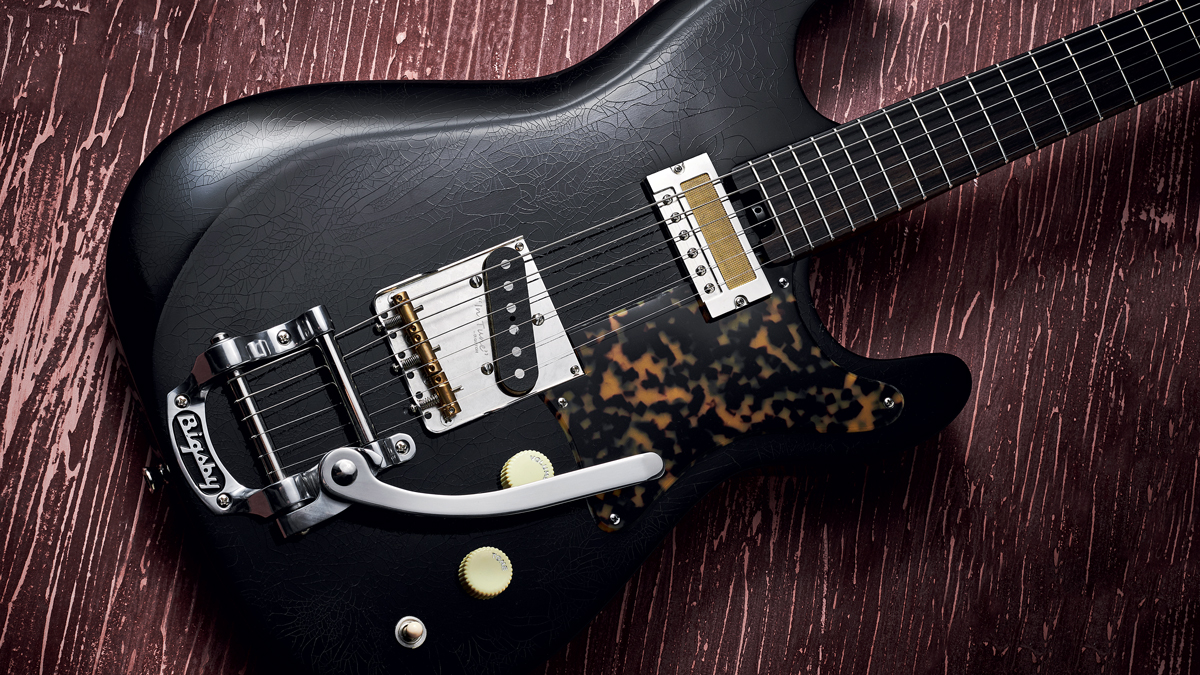Guitar World Verdict
This strikingly original retro mash-up by new Northern Ireland-based maker Chris Moffitt comes with plenty of options, but however you configure it, this is a bold new design that will reward the sonically adventurous.
Pros
- +
Nicely competent build.
- +
Excellent component and pickup choice.
- +
Characterful, evocative sounds.
Cons
- -
Aside from a few minor issues there’s very little not to like here.
You can trust Guitar World
While the mainstream über-brands continue to fill our musical instrument outlets with new versions of the same, many of us have to search a little further for something we find inspiring.
Increasingly, it seems it’s the small ’shop makers that offer a very much new style, even though it can quite often look like something you can’t remember from yesteryear. We have to thank Ariel Posen for the birth of this Kithara Harland.
“After some fans of Ariel pointed him in our direction, Chris Moffitt met with him and there was an immediate click around a shared philosophy of guitar building,” explains Matthew Cordiner who looks after Kithara Guitar’s business, while Chris builds the guitars.
“From there, a conversation was born around designing something together,” Matthew continues. “Ariel wanted to explore using his signature 648mm [25.5-inch] baritone style while incorporating a Bigsby. And after months of back and forth the Harland model was born, with Harland #1 residing in Canada with Ariel.
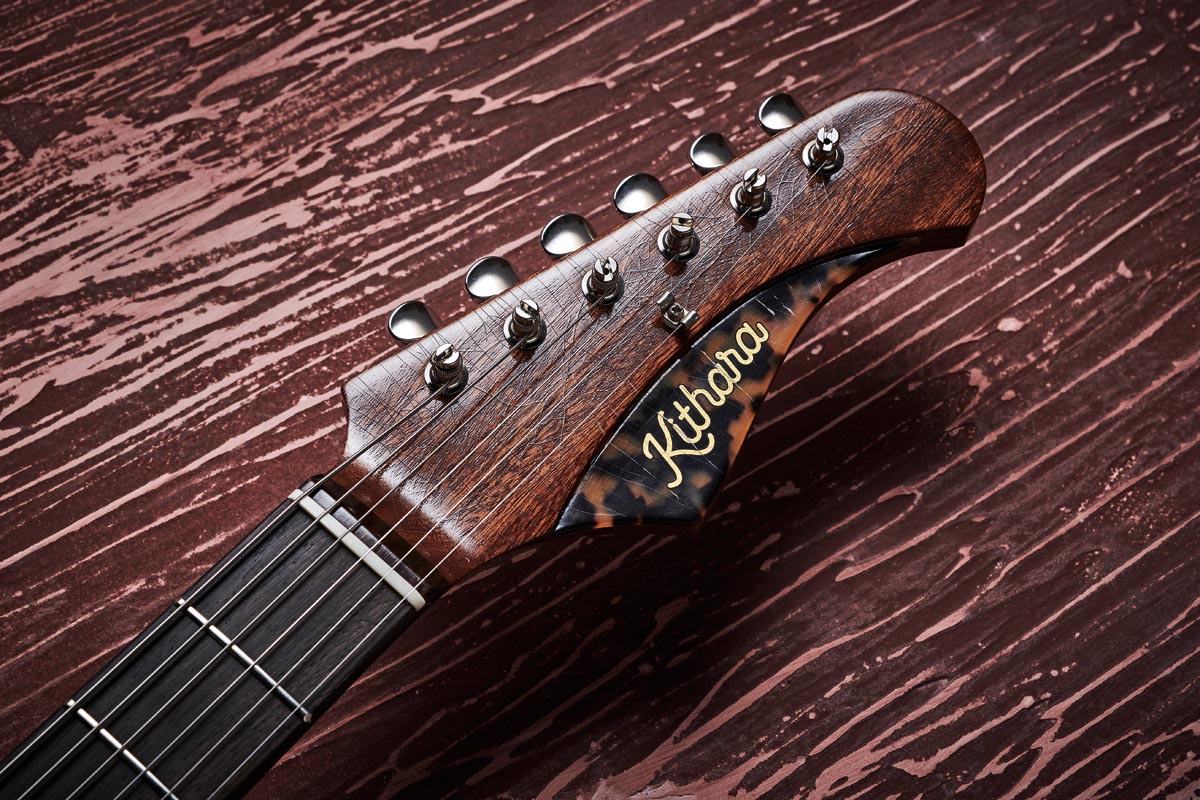
Since then we’ve adapted it to also be offered in standard tuning as well as the baritone and it’s currently our bestseller!” Opening the hard case we’re taken back in time.
This is hugely characterful guitar making, full of top-quality craft and parts, yet it looks like something you might have found in a loft. It’s alluringly odd. The design is based around a Strat, of course, although the treble half is more Tele with a tight edge radius.
Meanwhile, the bass side of the body adds an elongated chamfer to the top edge and a longer rib-cage contour on the back. But it’s the heavily cracked black nitro finish that’ll be the talking point.
It’s not reliced as such (although you can order that), and on one hand looks like a gloss finish that’s gone wrong. In defence, though, the interlocking crazing looks like a studied work of art. The neck has a similar cracked and glossed finish to the headstock face with its attractive relief and tortoise-shell insert with a sympathetic gold transfer logo.
The back has a lighter satin nitro finish and, despite it looking like a darker chocolate roasted maple, it’s actually mahogany topped with a deep and rich brown Indian rosewood fingerboard, devoid of face markers.
In fact, the only position markers are the very small side dots that might prove, er, fun on a dark stage. The hardware and pickup style moves the Harland still further from the mainstream.
It’s not the lightest instrument of this style we’ve encountered, but the weight gives the instrument a very centred strapped-on feel
The antique Bigsby brings its own vibe to the build, contrasted by the way-more-modern and beautifully engineered Gotoh Tele-style bridge with its ‘In-Tune’ brass saddles and relaxed side walls.
And while that holds a flush pole Mojo 52, the GTone at the neck is based on a Guyatone ‘gold foil’ and, frankly, even if it sounds pants we’d keep it on as it looks like something Kithara nicked from a radiogram… which is clearly where the control knobs come from.
The retro style is accentuated by the beautiful slice of acetate tortoiseshell that’s used for the pickguard, the same material found on the control cavity coverplate.
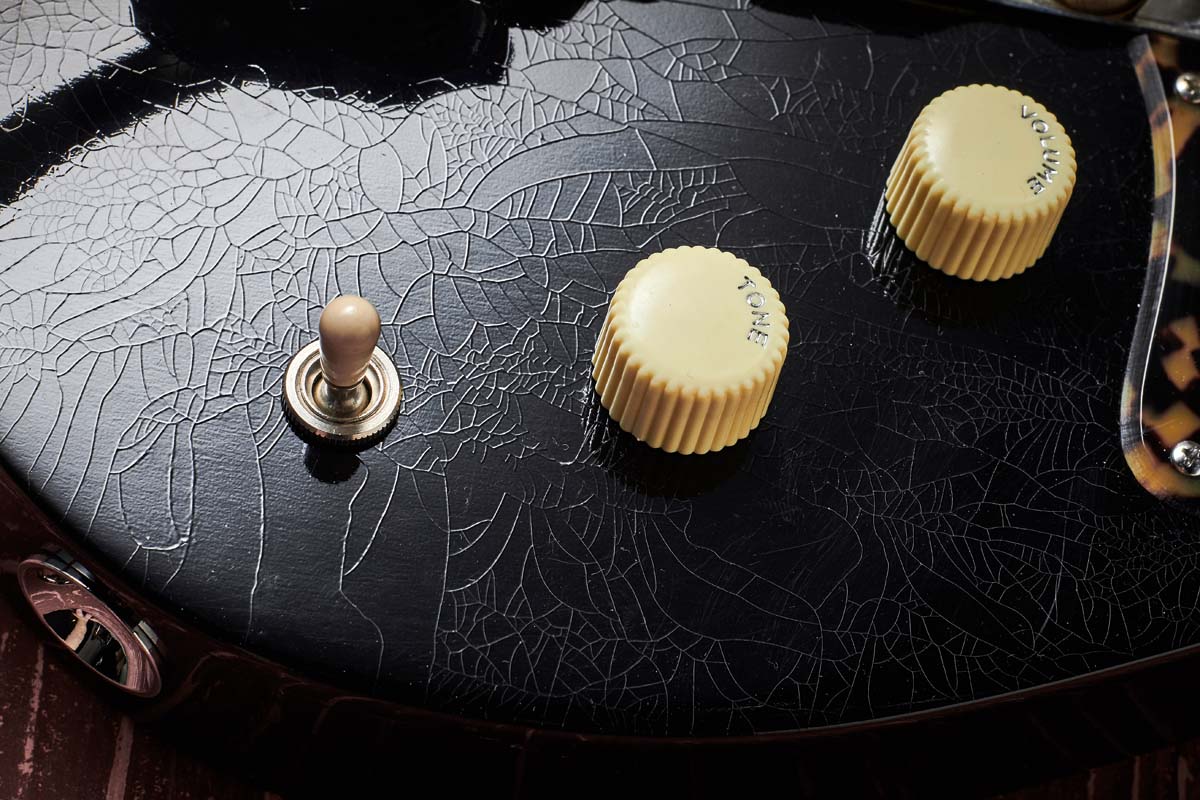
Feel & Sounds
The feel of the Harland is again a little unusual but far from unlikeable. It’s not the lightest instrument of this style we’ve encountered, but the weight gives the instrument a very centred strapped-on feel. And yet the neck seems almost delicate in comparison with a thin-depth shape that isn’t a million miles away from the Charvel we evaluated last issue.
There’s virtually zero taper to the depth, which measures 20.9mm at the 1st fret and 21mm at the 12th, with a shallow C profile rather that the more shouldered flat D of that Charvel.
As Matthew points out, though, “neck profiles can be carved specifically to the customer or retailer’s preference. The black demo model you have showcases one of our thinner necks, but the majority of what we do would be a standard or chunky C shape neck. We can, however, do a very wide range of profiles/thicknesses, which is one of the many benefits of each one being hand-carved in-house.”
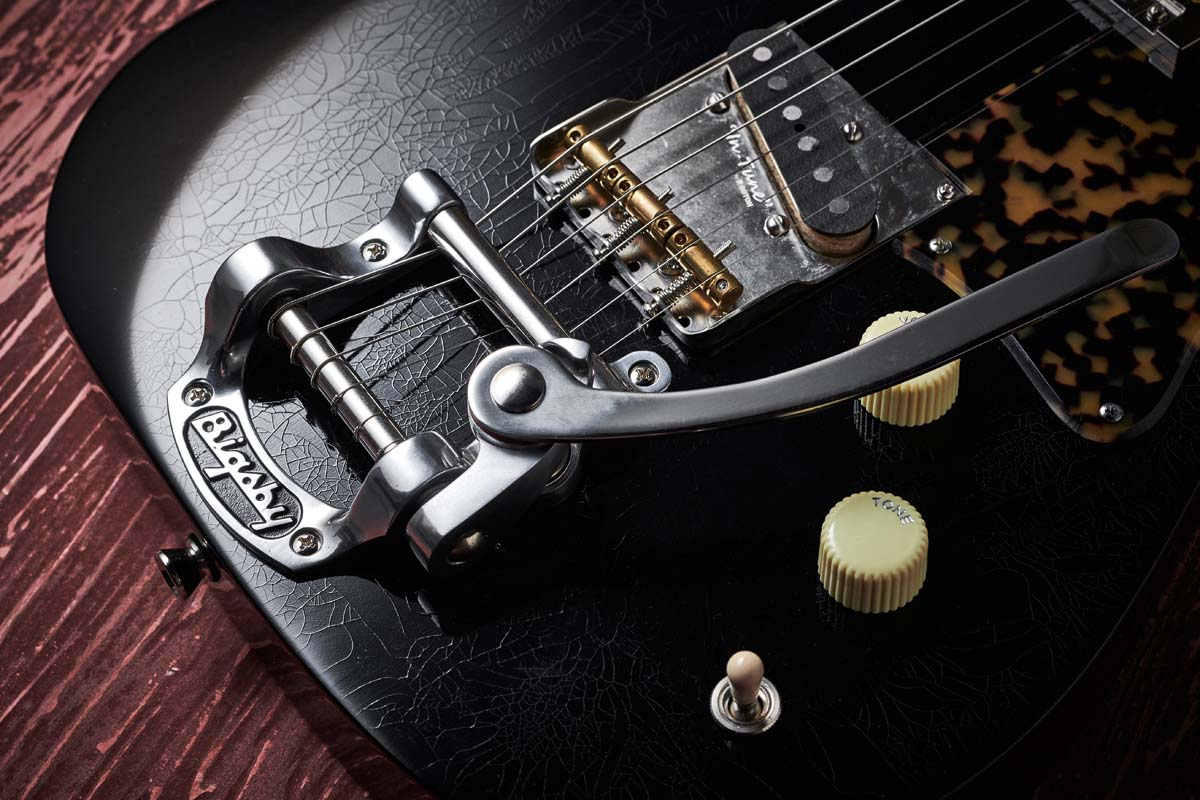
The Jescar medium frets take it a long way from feeling like a shred machine, and while the work is excellent, slightly smoother tops to the frets would enhance the feel.
Again, like that Charvel, we have the open-wheel-style truss rod adjuster, which makes any tweaks quick and easy, although the setup feels quite firm with a string height of 1.78mm (0.070 inches) and 0.011 to 0.052-gauge D’Addarios. It invites you to dig in, and the unplugged response is certainly lively.
Kicking in a bit of dirt or fuzz adds bite, and it sounds both grungy and defined at the same time. It’s a welcome alternative voice and one we’d like more time to explore
Once the strings have been stretched tuning is stable – although, oddly, the tuners themselves feel rather stiff. But with its simple drive and a balanced low output from the two disparate pickups, there’s nothing to get in the way of the important bit: your playing. And if you live in the clean-to-lighter crunch area, you’re in for a treat here.
Both pickups are quite a bit further from the strings than we might normally set them. The high E response of the GTone is consequently a little soft, but that was quickly sorted and it’s the character of this pickup, a warm single coil, that keeps you engrossed with an excellent dynamic range that really reacts to pick strength and position.
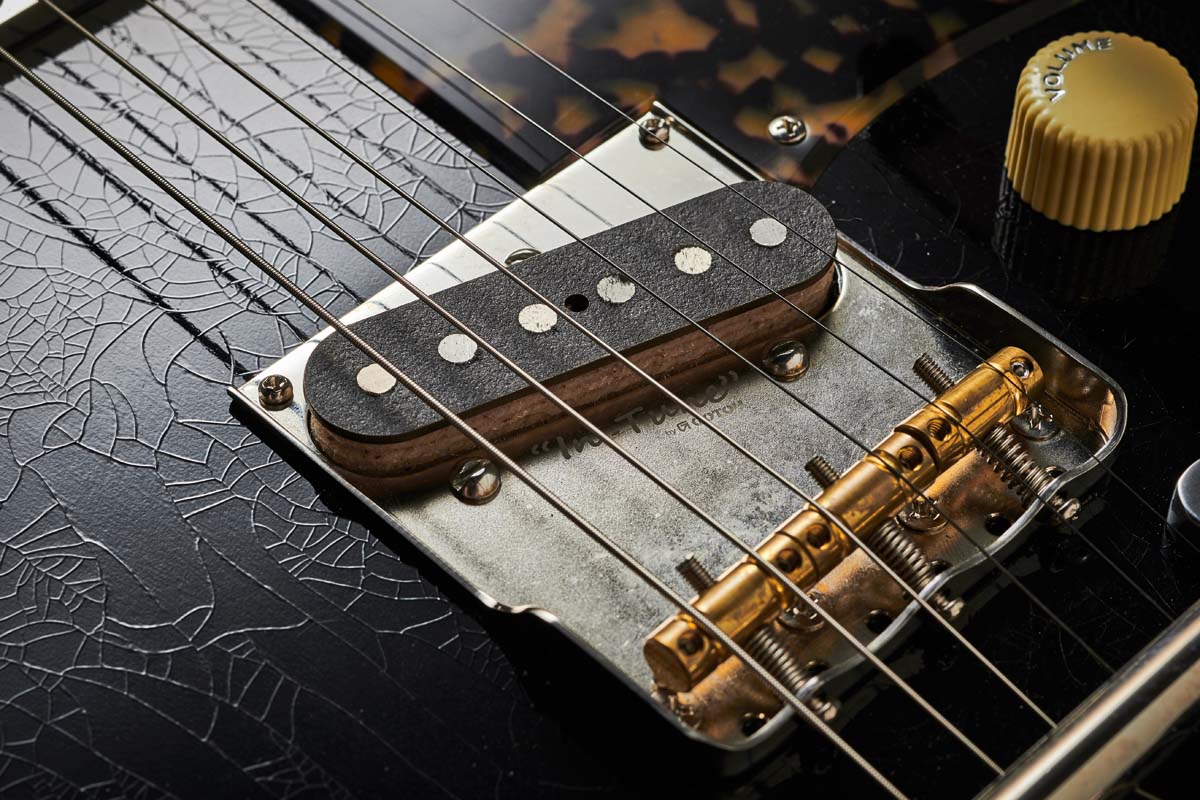
Kicking in a bit of dirt or fuzz adds bite, and it sounds both grungy and defined at the same time. It’s a welcome alternative voice and one we’d like more time to explore. The bridge pickup also has that subtly rounded high-end that sounds a little smoother, certainly when compared with a Fender American Vintage Tele’s bite.
But, of course, it’s still very much in Tele territory and, sound-wise, quite a contrast to the neck pickup. But it really broadens the range of the Harland with plenty of country lead bite if you need. With that little bit of height adjustment, this pickup really does the job, sounding nicely raw but not too thin.
From the 50s jazz voice at the neck to roots-rock at the bridge, and a simply beautiful mix, its characterful roots-rock Americana voice is superb and banishes any Charvel-like thoughts from our minds, not least with some light shimmers from that Bigsby.
Some players might prefer a slightly more graduated volume taper as so much of the sonic appeal is the subtle shading of the tones and it drops off a little too quickly. The tone, meanwhile, is nicely tapered as you pull it back.
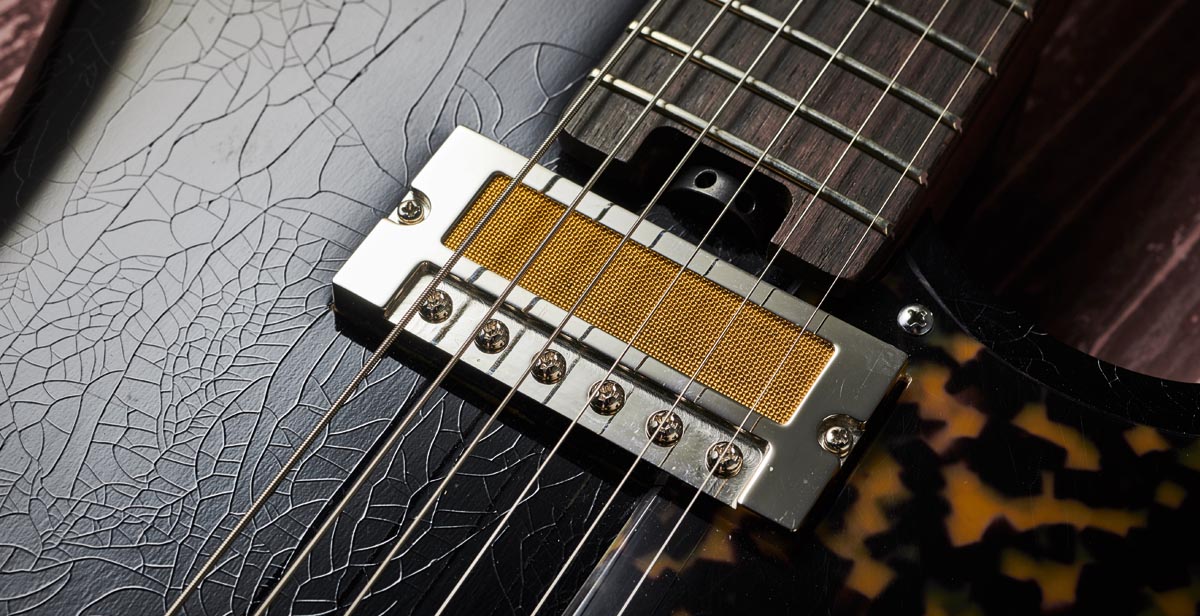
Verdict
This is a very nicely made instrument with plenty of custom options. Its polarising style is exactly the point, but if your taste nods back to the glories of the 60s you might well be attracted. We certainly are.
Yet it’s the combination of the seemingly disparate elements that’s the appeal: the alder body with its mahogany bolt-on neck pairs down the Tele ‘bite’, while that GTone ‘gold foil’ takes us off in another direction altogether… particularly with the Bigsby’s specific feel and tone. An inspiring instrument for the creative musician.
Specs
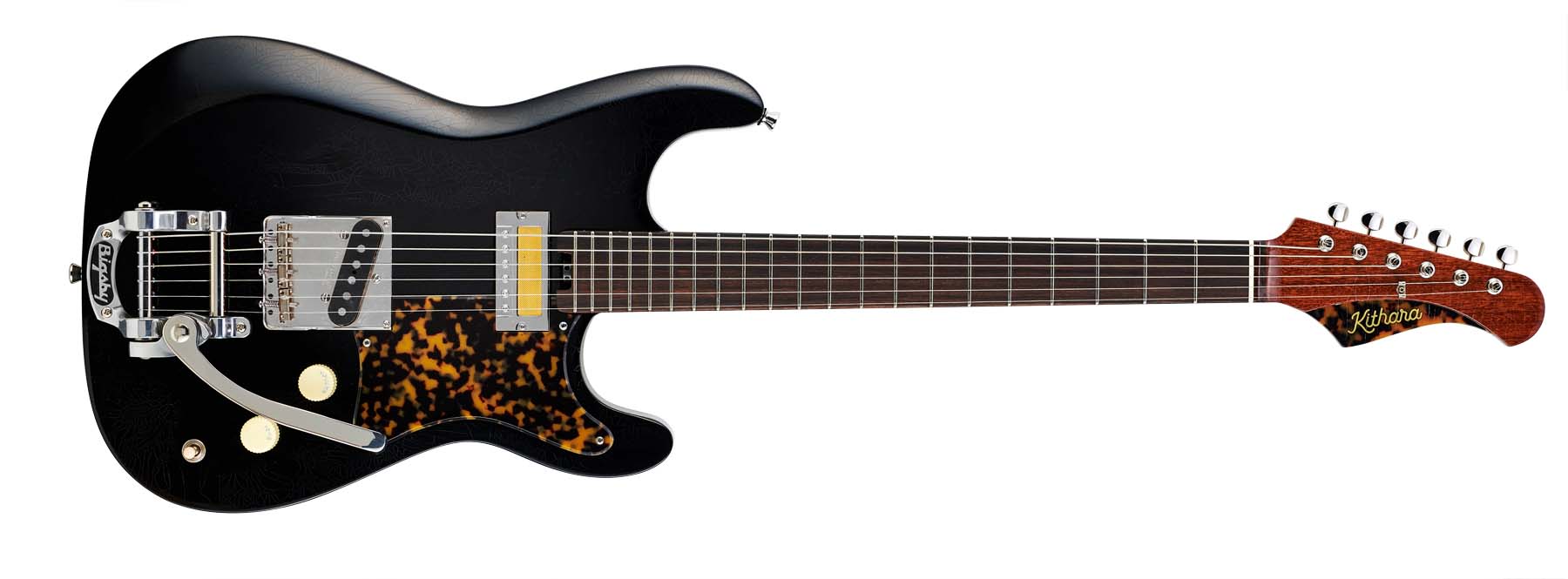
- PRICE: From £2,299 (inc case)
- ORIGIN: UK
- TYPE: Double-cutaway solidbody electric
- BODY: Alder
- NECK: 1-piece mahogany, bolt-on
- SCALE LENGTH: 648mm (25.5”)
- NUT/WIDTH: Bone/43.1mm
- FINGERBOARD: Indian rosewood, small side-dot inlays, 305mm (12”) radius
- FRETS: 22, Jescar medium jumbo (47095)
- HARDWARE: Gotoh ‘In-Tune’ bridge with compensated brass saddles, Bigsby B5 vibrato, Gotoh vintage-style tuners nickel/chromed-plated
- STRING SPACING, BRIDGE: 54mm
- ELECTRICS: Mojo 52 single coil (bridge) and Mojo GTone single coil (neck), 3-way toggle pickup selector switch, master volume and tone
- WEIGHT (kg/lb): 3.67/8.1
- OPTIONS: Include maple neck, ebony fingerboard, Deacci TeleTone (at bridge), brown control knobs, baritone setup and colour. Contact Kithara for pricing confirmation and custom options
- RANGE OPTIONS: Other Kithara models include the offset Fifty-Six, the Tele-inspired Astral and the chambered non-cutaway Ormsby (all from £2,249)
- LEFT-HANDERS: Yes
- FINISHES: Piano Black – aged nitro to body with satin nitro neck back. 8 standard colours plus custom colours on request
- CONTACT: Kithara Guitars

Dave Burrluck is one of the world’s most experienced guitar journalists, who started writing back in the '80s for International Musician and Recording World, co-founded The Guitar Magazine and has been the Gear Reviews Editor of Guitarist magazine for the past two decades. Along the way, Dave has been the sole author of The PRS Guitar Book and The Player's Guide to Guitar Maintenance as well as contributing to numerous other books on the electric guitar. Dave is an active gigging and recording musician and still finds time to make, repair and mod guitars, not least for Guitarist’s The Mod Squad.
“It holds its own purely as a playable guitar. It’s really cool for the traveling musician – you can bring it on a flight and it fits beneath the seat”: Why Steve Stevens put his name to a foldable guitar
“Finely tuned instruments with effortless playability and one of the best vibratos there is”: PRS Standard 24 Satin and S2 Standard 24 Satin review
